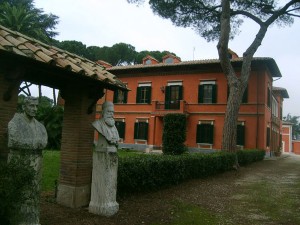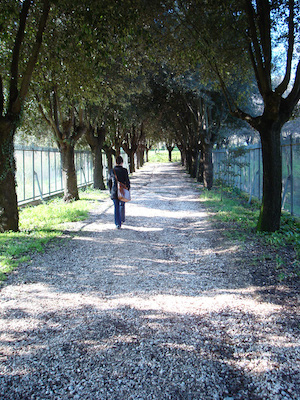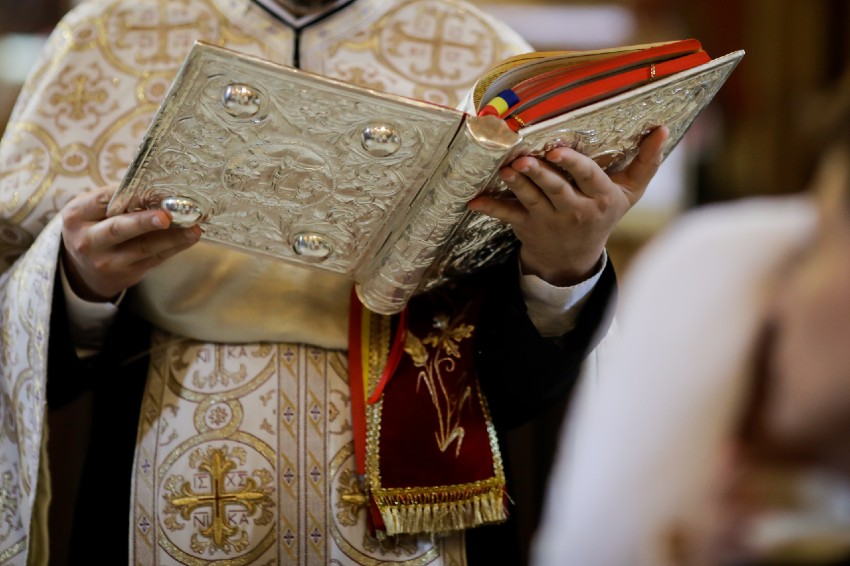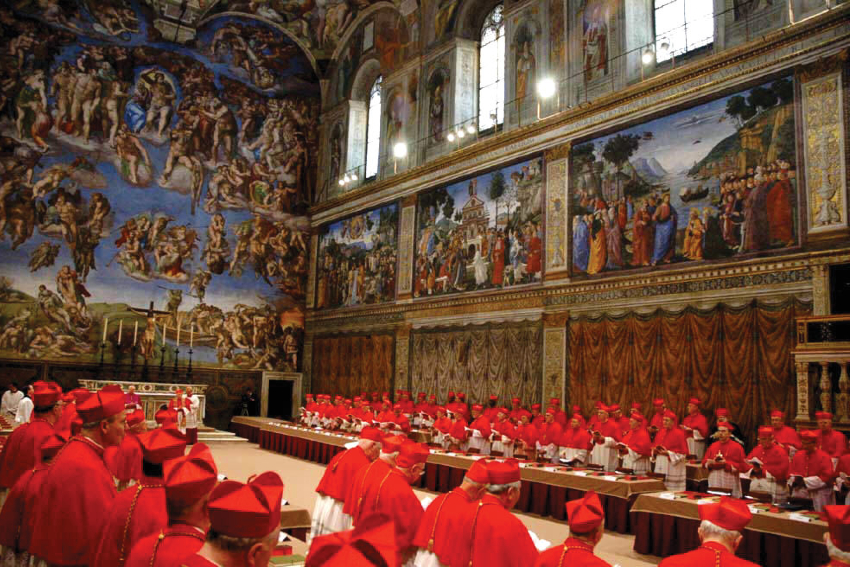February 24, 2017, Tuesday — Pilgrimage Toward a Hidden God
Pilgrimage Toward A Hidden God
A powerful contemporary intellectual movement today called “transhumanism” hopes the human race can be developed, improved, “transcended.” Christians share part of this hope, but by means of an entirely different process…
By Robert Moynihan
Each man desires to know his true nature and identity, who he is, what sort of being he is. And each man desires to understand the meaning of his life, and to know his final end, his final destiny.
This is why the British poet Alexander Pope was correct when he wrote in 1734 that “the proper study of mankind is man.”
What are we? For Pope, whose poem was praised throughout Europe in the 1700s, man is:
a being darkly wise, and rudely great,
with too much knowledge for the Sceptic side,
with too much weakness for the Stoic’s pride.
Pope summed up man’s nature in a passage in which he uses the word “doubt” three times:
He hangs between; in doubt to act, or rest;
in doubt to deem himself a God, or Beast;
in doubt his mind or body to prefer…
For the Christian, this triple doubt yields in the end to faith. Christ cuts through the doubt, scatters it. The Church, Christ’s continuing presence in this world, shares this faith, proclaims it, bears witness to it.
What faith? That man, this being hanging “in between,” has both a temporal and an eternal existence.
That man, fallible (fallen) and mortal, is yet “sought out” by the Creator of all things to share the Creator’s very life and being.
That man’s final end is to be “divinized” through dying to himself and living to God, through “putting on Christ” and being “conformed” to the One over whom death no longer has any power.
In our own time, the achievements of modern science have led some to hope that human nature itself may be transformed, made stronger, more intelligent, more able to resist disease and live, perhaps, for centuries – perhaps, it is said, “forever.”
Various aspects of this hope have come together in the movement called “transhumanism,” which holds that the human species in its current form does not represent the end of our development but rather only “a comparatively early phase.”
In one sense, this movement is unobjectionable. It is not wrong to desire to make human life healthier, more vibrant, less subject to disease. These are the essential goals of all medical care, and seem good goals, reasonable goals.
But there is a point at which “transhumanism” can become problematic, and perhaps lead us astray, away from the path laid out for us by the Faith.
“Our purpose now, in the 21st century, is to become god-like and overcome death,” Zoltan Istvan, a transhumanist and former US presidential candidate, has said.
And so the ancient error tempts us once again – the desire to become “god-like” without passing through the doorway opened by Christ, the doorway which is Christ.
“For all of us, God is the origin from which we come and yet still also the future toward which we are going,” Fr. Joseph Ratzinger – then a German theology professor, later Pope Benedict XVI, now Emeritus Pope Benedict, about to turn 90 — wrote in a homily he delivered in 1965 when he was 39.
“And that means that, for all of us, God cannot be found except by going to meet Him as the One who is coming, who is waiting for us to make a start and demanding that we do so.”
And he adds: “We cannot find God except in this exodus, in going out from the coziness of our present situation into what is hidden: the brightness of God that is coming.”
And he concludes: “The image of Moses, who had to climb up the mountain and go into the cloud to find God, remains valid for all ages. God cannot be found – even in the Church – except by our climbing the mountain and entering into the cloud of the incognito of God, who in this world is the hidden One.”
So a different path is described here than the path of altering our genetic code, or injecting ourselves with jaguar blood, or implanting super-powerful computer chips in our brains, or chests, to improve our memories or regulate the beating of our hearts.
It is a path which implies a personal journey, a sort of pilgrimage.
And in his homily, Ratzinger helps us to understand that we already have the tools, the nature, to make this journey… if we were only to understand clearly who we are.
The real sign that God chose to call us to Him is… hiddenness, Ratzinger said.
“Into a new order…”
“God is not to be found in the comprehensible systems of this world but can only be found at times when we grow beyond them,” he wrote.
“Certainly, God has given a sign of himself in the greatness and power of the cosmos, from which we may simply perceive something of the power of the Creator,” he wrote. “But the real sign that he chose is hiddenness, from the wretched people of Israel to the child at Bethlehem to the man who died on the Cross with words ‘My God, my God, why have you forsaken me?’”
“This sign of hiddenness,” he continued, “points us toward the fact that the reality of truth and love, the actual reality of God, is not to be met within the world of quantities but can be found only if we rise above that into a new order.”
This “world of quantities” is, of course, the world of science, the world of measurement, the world of dimension, of height and width and depth – the material world.
Our everyday world.
And this is why we must be cautious about transhumanism, because the true destiny of human beings is not in this world of matter and measurement, but in God, the divine realm of utter reality, which is also the realm of, the dwelling place of… holiness.
That is the “new order” Ratzinger refers to.
And any other destiny, even one in which we live for millennia, is less than this destiny, which is ours through Christ.
Ratzinger goes into this truth by means of reflection on the “marvelous doctrine of the three orders” of Blaise Pascal (1623-1662; Pascal died at the young age of 39). Pascal, the great French philosopher and mathematician, was also a Christian mystic (he had a powerful mystical experience of the presence of God at the age of 31, in 1654; he wrote down an account of what he experienced and sewed it into the lining of a coat; it was not found until after his death. See below for the content of the note…)
“According to him (Pascal),” Ratzinger says, “there is, first of all, the order of quantities – and that is enormous and infinite, the inexhaustible object of natural science.
“Besides that, the order of the mind, the second great realm of reality, appears, on the basis of quantity, as simply nothing, since quantitatively it takes up no space whatever.
“And nonetheless, a single mind is greater than the entire order of the quantitative cosmos; because mind, which has neither weight nor length nor breadth, is able to measure the entire cosmos.”
So Ratzinger has presented to us the first two “orders” of reality, matter and mind. But he is not yet done.
“Yet above that, again, stands the order of love.”
So the third “order” is… love.
Which, of course, signifies the presence of personhood, personality.
“That (order) too is, in the first instance, simply nothing in the order of ‘mind,’ of scientific intelligence, since it cannot be the object of scientific demonstration,” Ratzinger writes.
“And nonetheless, a single motion of love is infinitely greater than the entire order of ‘mind,’ because only that represents what is truly creative, life-giving and saving power.”
Again, this is the level of the person, where mind infolds upon itself to become self-conscious, the level of choice, of volition, and also the level of self-sacrifice, and of individual conscience… the level of a living soul.
“God’s incognito is intended to lead us onward into this ‘nothing’ of truth and love,” Ratzinger wrote, “which is nevertheless in reality the true, single, and all-embracing absolute, and that is why in this world He is the hidden One and cannot be found anywhere else but in hiddenness.”
These things are perhaps not easy to understand, at least on first reading.
But they are the things we need to understand and must understand if we are to make a reasoned critique of transhumanism, with the goal of preserving the highest and most holy things for ourselves and those who come after us, and even for those who are most ardent in their search for a higher form of humanity…
In Search of the Hidden One…
This need to understand is a reason for setting out on… a pilgrimage.
A pilgrimage or a pilgrimage-retreat, can become the source of deeper understanding and deeper insight into the Faith, and into everything that threatens or weakens or replaces the Faith.
Many pilgrims say they come to a clearer understanding of these things while staying with us at the Villa Serenella, a small Maronite monastery on the outskirts of Rome owned by an order of monks from Lebanon.
Here, still within the boundaries of modern Rome, we are about three miles from the geographical “heart” of the Catholic Church, yet we are also removed — removed from the noise and hustle and bustle of the world, secluded in a grotto of peace.
When we sleep, the noises and lights of the city do not permeate the tranquil fortress of the monastery grounds.
Nothing quite compares to an early morning stroll through the trees and Villa walkways before joining the monks for their chant.
As the mist rises just after dawn, we throw a bit of cold water on our faces, dry them, and make our way in silence from our rooms to the monastery Chapel.
There, a small group of Lebanese Maronite monks celebrate the morning Office in the Maronite rite, using the Syriac language, a dialect of Aramaic — the language that Jesus spoke 2,000 years ago.
Their voices swell and fill the space with a deep, almost rumbling sound which ascends and descends, rising up toward heaven and returning to earth again.
Hearing their voices, we feel a special closeness to the son of Mary, the teacher from Nazareth who suffered and died in Jerusalem.
By coming to this place, we have a chance to go each day into the center of Rome and visit the places where St. Peter and St. Paul lived, walked, were imprisoned, and were executed.
And each day we can return to the Villa Serenella, where we enjoy an evening meal of genuine Italian food, prepared for us by Anna, a smiling Italian lady who provides for us as if we were members of her own family.
And so, in this quiet rhythm, the days pass: monastery, prayer, chant, dinner, sleep, waking, prayer, chant, visit to the city center and the tombs of the first martyrs, then back to the monastery.
We will be back at the monastery for 10 days for a special “Divine Mercy Pilgrimage” at the end of April, just after Easter.
Rome is lovely in April and, if you have the time and means, this pilgrimage might be an extraordinary time of grace for you and your entire family.
During our pilgrimage, which is always a search for the face of Christ, for Christ himself, we reflect continually on the meaning of our lives, and of what it means to be a pilgrim in this world…
Note: If you would like more information about how to join one of our pilgrimages to Rome and the shrines of central Italy, staying at the Villa Serenella and participating there in the prayer life of the Lebanese Maronite monks, please write via return email, or call 202-536-4555.
“Night of Fire” (link)
It was November 23rd, 1654 and Pascal was at home alone.
The sun was set and all was dark.
He was most likely preparing for bed when, suddenly, at around 10:30 p.m., something supernatural happened.
It’s not clear exactly what he saw, but the amazing mystical experience lasted for a full two hours.
As soon as it was over, he grabbed a pen and paper and wrote down what was swirling through his head.
“Joy, joy, joy, tears of joy”
Here’s what he wrote:
The year of grace 1654,
Monday, 23 November, feast of St. Clement, pope and martyr, and others in the martyrology. Vigil of St. Chrysogonus, martyr, and others. From about half past ten at night until about half past midnight,
FIRE.
GOD of Abraham, GOD of Isaac, GOD of Jacob
not of the philosophers and of the learned.
Certitude. Certitude. Feeling. Joy. Peace.
GOD of Jesus Christ.
My God and your God.
Your GOD will be my God.
Forgetfulness of the world and of everything, except GOD.
He is only found by the ways taught in the Gospel.
Grandeur of the human soul.
Righteous Father, the world has not known you, but I have known you.
Joy, joy, joy, tears of joy.
I have departed from him:
They have forsaken me, the fount of living water.
My God, will you leave me?
Let me not be separated from him forever.
This is eternal life, that they know you, the one true God, and the one that you sent, Jesus Christ.
Jesus Christ.
Jesus Christ.
I left him; I fled him, renounced, crucified.
Let me never be separated from him.
He is only kept securely by the ways taught in the Gospel:
Renunciation, total and sweet.
Complete submission to Jesus Christ and to my director.
Eternally in joy for a day’s exercise on the earth.
May I not forget your words. Amen.
He then took the piece of paper with the story and carefully sewed it into the inside of his jacket, which he kept with him the rest of his life.
This was not discovered until after his death.
Note: The Moynihan Letters go to some 20,000 people around the world. If you would like to subscribe, click here to sign up for free. Also, if you would like to subscribe to our print magazine, Inside the Vatican, please do so! It would support the old technology of print and paper, as well as this newsflash. Click here.
What is the glory of God?
“The glory of God is man alive; but the life of man is the vision of God.” —St. Irenaeus of Lyons, in the territory of France, in his great work Against All Heresies, written c. 180 A.D.











Facebook Comments